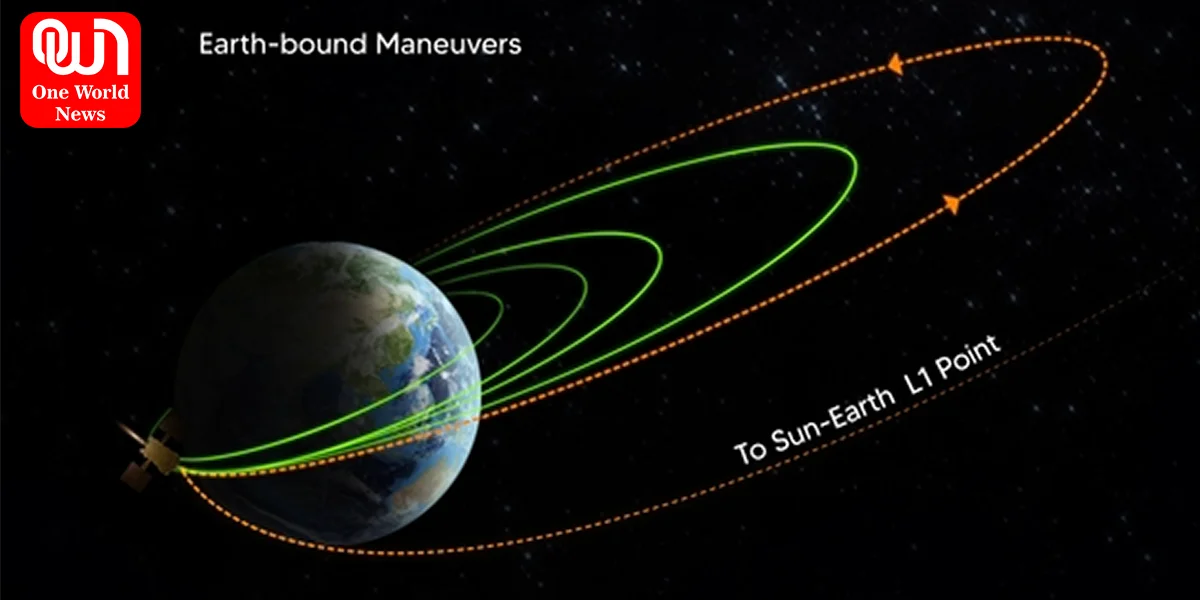Aditya-L1 is on its way to perform a Trans-Lagrangian1 insertion manoeuvre after finishing four earth-bound orbital manoeuvres.
Aditya-L1, the first space-based Indian solar mission to study the Sun, has successfully completed its final manoeuvre before entering a halo orbit around the Sun-Earth Lagrange point 1.
Taking to X(formerly known as Twitter), Aditya-L1 Mission: The fourth Earth-bound manoeuvre (EBN#4) is performed successfully. ISRO’s ground stations at Mauritius, Bengaluru, SDSC-SHAR and Port Blair tracked the satellite during this operation, while a transportable terminal currently stationed in the Fiji islands for Aditya-L1 will support post-burn operations. The new orbit attained is 256 km x 121973 km. The next manoeuvre Trans-Lagragean Point 1 Insertion (TL1I) — a send-off from the Earth — is scheduled for September 19, 2023, around 02:00 Hrs. IST
Aditya-L1 Mission:
The fourth Earth-bound maneuvre (EBN#4) is performed successfully.ISRO’s ground stations at Mauritius, Bengaluru, SDSC-SHAR and Port Blair tracked the satellite during this operation, while a transportable terminal currently stationed in the Fiji islands for… pic.twitter.com/cPfsF5GIk5
— ISRO (@isro) September 14, 2023
The first, second and third earth-bound manoeuvre was successfully performed on September 3, 5 and 10 respectively.
After AstroSat (2015), Aditya-L1 is ISRO’s second astronomical observatory-class project.
The mission’s path is noticeably shorter than that of Mangalyaan, India’s previous Mars orbiter mission. The spacecraft will be positioned in a halo orbit around the Sun-Earth system’s Lagrangian point 1 (L1). Insights into the solar corona, photosphere, chromosphere, and solar wind are among the objectives of the project.
Read more:- Aditya-L1 Launch: Aditya-L1 is on its way to observe solar activities!
Aditya-L1’s main goal is to learn more about the behaviour of the Sun, particularly its radiation, heat, particle flow, and magnetic fields, and how they affect Earth.
Lagrange points are unique locations in space where the gravitational force of two large orbiting bodies, like the Sun and the Earth, is balanced. This implies that a little object, like a spacecraft, may stay at these locations without burning through a lot of fuel to keep its orbit stable. There are five Lagrange Points, and each one has unique properties. These points allow a small mass to circle between two larger masses in a stable manner.
Read more:- India’s Aditya-L1 Mission: Probing Sun’s Secrets from L1 Point
Aditya-L1 has seven scientific payloads that were developed domestically by the ISRO and numerous national research organizations, including the Indian Institute of Astrophysics (IIA) and the Inter-University Centre for Astronomy and Astrophysics (IUCAA), located in Bengaluru and Pune, respectively, in India.
These payloads use electromagnetic, particle, and magnetic field detectors to explore the photosphere, chromosphere, and the Sun’s outermost layers, known as the corona.
Like this post?
Register at One World News to never miss out on videos, celeb interviews, and best reads.









